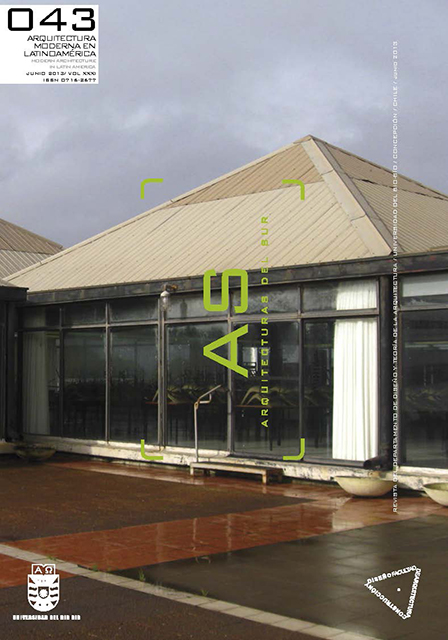WA-AW. Modern architecture for public health: An analysis from Wladimiro Acosta and Amancio Williams projects
Keywords:
modernization, health architecture, design project, transformations, systematisationAbstract
After the mid 1930s in Argentina, as in other Latin American countries, the government, through its public works, began to use modern architecture as a vehicle of communication, to create a public image of progress and technical efficiency. This impulse is evident regardless of the ideological fundaments of the different governments. Sometimes young architects were incorporated into the technical divisions of public offices (thereby redefining professional relationships) while other times prestigious architects were employed for projects. In both cases, technical knowledge, mediating between politics and society, was placed in a symbolic position of neutrality and administrative rationality. (Liernur, 2001)
The purpose of this article is to account for transformations that occurred within project design processes and logic in little over one decade, based on an analysis of Amancio Williams and Wladimiro Acosta’s proposals for public hospitals.
Downloads
Downloads
Published
How to Cite
Issue
Section
License
The content of the articles published in each issue of Arquitecturas del Sur is the sole responsibility of the authors and does not necessarily represent the opinion of University of the Bío-Bío.
The authors will maintain their copyright; however, they will guarantee the journal the right to first publication and dissemination of their work. The publication of the article in Arquitecturas del Sur will be subject to the Creative Commons International license (CC BY-SA) that allows others to adapt: remix, transform and build on the material for any purpose, even commercially; share: copy and redistribute the material in any medium or format, as long as the authorship and first publication in this journal are acknowledged by citing them correctly, and their new contributions are under a license with the same terms.














 Programa de Información Científica/Concurso Fondos de Publicación de Revistas Científicas 2018/ Proyecto Mejoramiento de Visibilidad de Revistas UBB (Código:FP180007)
Programa de Información Científica/Concurso Fondos de Publicación de Revistas Científicas 2018/ Proyecto Mejoramiento de Visibilidad de Revistas UBB (Código:FP180007) 
